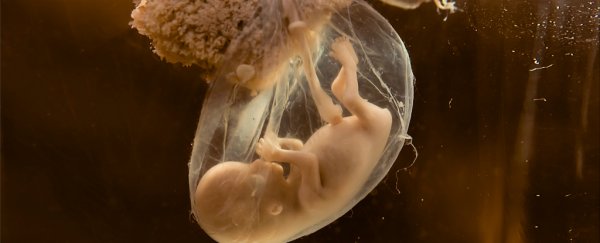Surgeons in the US have announced that they will begin trialling uterus transplants in the coming months in order to help women who no longer have a uterus fall pregnant. This is the first time the procedure will be performed in the US.
The procedure will match women who have had their uterus removed due to illness or damage, or who were born without one, with a donated organ. After the recipient has had one or two children, the uterus will be removed again, to prevent her from having to remain on anti-rejection drugs the rest of her life.
While organ transplants have been going on for decades, uterus transplants are relatively new on the scene. Because a uterus isn't essential for survival, it wasn't considered an equally high priority by most medical researchers as organs like livers and hearts.
But with tens of thousands of women in the US alone unable to have children due to not having a womb, there's been strong interest in the procedure.
Back in 2014, a woman in Sweden became the first to give birth with a transplanted womb after receiving the donation from an unrelated 61-year-old, and at the end of September the UK announced that it would perform the procedure on 10 women as part of a trial.
This is similar to what will happen in the US Surgeons at The Cleveland Clinic will offer 10 women transplanted uteruses in the coming months. It's already starting screening potential candidates aged between 21 and 30. All candidates need to have their ovaries still intact, and need to be mentally and financially stable.
The procedure works by first retrieving eggs from the women's ovaries, fertilising them and freezing them until they're ready for transplantation.
"One year after transplant, the frozen embryos are then thawed and implanted, one at a time, into the patient until she becomes pregnant," the hospital told the press.
After birth the woman will be able to keep the uterus to try for another baby, or can have it removed.
"If she does not want to have surgery to have it removed, doctors said it may be possible to quit the drugs and let the immune system reject the uterus, which should then gradually wither away," as Denise Grady explains over at The New York Times.
The experiment procedure has so far has a mixed success rate. The Swedish team has since performed nine uterus transplants, and have produced five pregnancies and four live births. But attempts at the procedure in Saudi Arabia and Turkey have been unsuccessful.
The main challenge is that the recipient's immune system wants to reject the uterus, which doctors try to avoid through various medications that suppress the body's. These drugs need to continue being taken during pregnancy.
Removing the uterus itself is also challenging. The uterus can be taken from a live or deceased donor, but due to the amount of delicate blood vessels in the area, it's delicate work, as Grady explains:
"The surgeons have to remove part of the donor's vagina and other tissue needed to attach the uterus to the recipient. And they must tease away tiny blood vessels without harming the donor."
There are also the standard challenges of IVF when it comes to fertilising the recipients eggs and re-implanting them.
But the hospital explains that women involved will be aware of all the risks, and for many of them it's their only chance to have a child. They've already had many women interested in the trial.
"The exciting work from the investigators in Sweden demonstrated that uterine transplantation can result in the successful delivery of healthy infants," Andreas Tzakis, Cleveland Clinic's lead investigator told The Telegraph.
